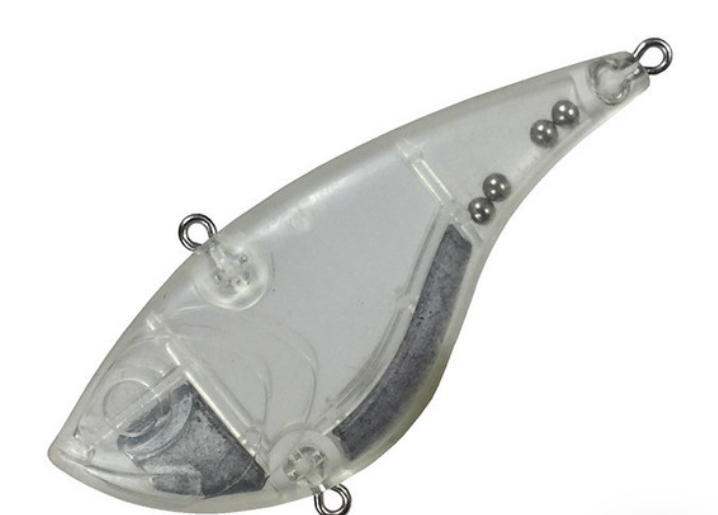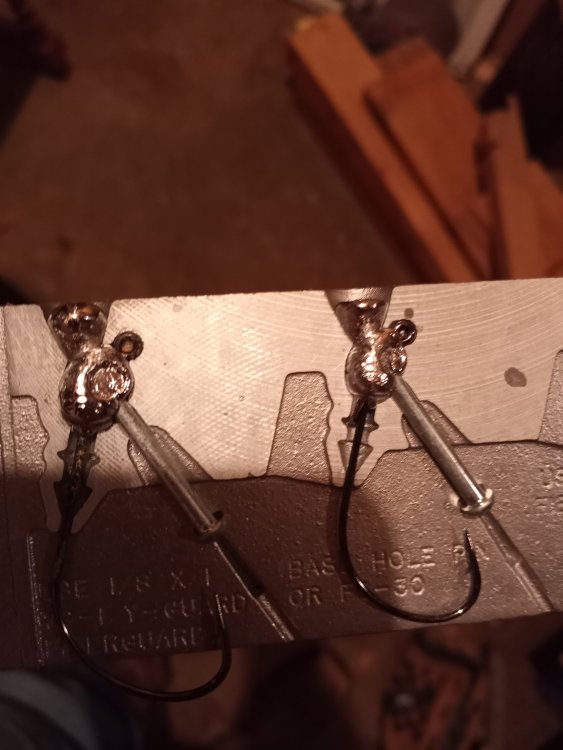
Big Epp
-
Posts
799 -
Joined
-
Last visited
-
Days Won
18
Content Type
Profiles
Articles
TU Classifieds
Glossary
Website Links
Forums
Gallery
Store
Posts posted by Big Epp
-
-
And you can find some of the tail doodads here: https://www.lurepartsonline.com/Lure-Making/Skirts-Rattles-Dressings/Skirt-Making-Materials/Silicone-Material?page=1
-
 1
1
-
-
You can find some different collars here, though not exactly the same: https://www.lurepartsonline.com/Lure-Making/Shop-By-Product-Category/Skirts-Rattles-Dressings/Skirt-Making-Materials/Collars?page=1
-
 1
1
-
-
I just watched a video of the hellhound's action. If i was going to make one, I'd find the center of balance, then move equidistant in each direction with an even amount of weight (so 2 holes for weight) to get the desired float level. Might even use 3 holes, with weight at the center of balance and on each side of it.
I know this reply is a bit late, how did whatever you did turn out?
-
I've seen a lot of people use maple or poplar for swimbaits. Something very buoyant like cedar, redwood, or basswood will take a ton of lead, whereas something more dense won't need nearly as much. A tradeoff is the maple is much harder to carve than basswood.
A lot of people will use different types of wood for different types of baits, and wood density can have a significant impact on lure function. The buoyancy of the wood works with the drag of the lip on crankbaits to impart action, gliders use the mass of the bait and the hydrodynamics of the profile to create a good glide, and so it goes.
-
 2
2
-
-
Don't ever, EVER lick melted lead.
-
 1
1
-
 2
2
-
-
We're down here now, but on the west end of the island. Our part of the surf has a decent trough before the first sandbar, and I haven't found any cuts in the bar nearby. I also left my big surf rod back home so I could fit everyone's pole, so I can't cast past the bar.
I've been using a double dropper rig with a small hook on each dropper baited with fishbites. Then instead of a sinker I've got a ¾oz jig with a white grub tail (also tipped with fishbites). I'm not trying that hard, but with 3 hooks you certainly can't say I'm not trying!
-
Some of the lipless cranks I've made using barrel weights I'll put 1 weight on the center of balance and another about half way to the nose.
-
 1
1
-
-
-
I fish mostly bass in the nidwest US, and I've really been enjoying a sunfish/bluegill pattern. So I guess my list would be:
1) Crayfish
2) bluegill
3) brown back, cream sides, light green belly
4) blue back, silver sides, pink belly
5) can't think of a 5th... should probably go sleep... something very shaddy I suppose.
Great question. Nice to see everyone's ideas!
-
 1
1
-
-
On 2/19/2011 at 3:45 PM, Vodkaman said:
Great write up. Someone will benefit from this thread in the future.
Dave
Ha! Right you are Dave. I'm working on a bunch of rats right now as well as a yellow bass wake bait. This old thread was just the ticket!
-
 1
1
-
-
I think @Outlaw4 has a good point about the weight. Keeping the weight down in the lure close to the belly might help keep it from rolling over and help it swim more upright. Generally speaking, keeping the lure sitting level can be really helpful. I've made some that sat nose up or down and still swam fine, but level is generally the way to go.
-
 2
2
-
-
Both are really cool! I always enjoy seeing the stuff people come up with. It's always challenging and inspiring. Great work, and good luck when it does come around!
-
 1
1
-
-
Feelin itchy now that you finished that death walker?

-
 1
1
-
-
Do you pour your baits in 2 parts, or pour 1 bait and then cut it?
-
I do like using hardwoods for glide baits though, explicitly because it takes so much less lead to balance it. I tried making a couple subsurface gliders out of redwood (which is crazy boyouant) and it took something like 10lbs of lead to get them to slow sink...
-
 2
2
-
 1
1
-
-
I also like using cedar, and also redwood. Part of that is I have an ample supply from various construction projects over the past couple years...
The part about cedar that i find can make it tough to carve is the very different density of the hard and soft growth rings. I have mostly red cedar. There is variation from piece to piece in this too. Overall though it is easy to saw and shape, it's pretty strong and durable, and it is very boyant. Another plus is how nice the shop smells when the dust settles! (I use a respirator to keep the dust from settling in my lungs).
Overall though I take a very utilitarian approach, and use whatever I have handy. As other have mentioned, each type of wood has its own characteristics and quirks, and I find it fun navigating that variability. I've used oak, pine(s of all sorts), pvc, basswood, maple, cedar, redwood, etc...
-
 2
2
-
-
I was a guy on YouTube who uses modeling clay to make masters for molds. I wonder if this would work similarly? Seems like a neat product.
-
 2
2
-
-
Great points! My pot was only half full (or a little less). I only had 1 extra pound of lead, so I'll need to pick up some more lead and maybe pick a warmer day to pour. It's been pretty cold here (20s and 30s).
Do the molds also lose heat quickly? I noticed I had much better luck this time, but the middle cavity (1/4oz) poured well while the end cavity (3/8oz) did not do great. I figured this is because of how cold it was, that the ends of the mold were cooling faster than the middle.
I placed all my hooks on top of a toasterover and they (as well as the pins) were hot to touch.
-
Alright, I preheated my mold (do-it poison tail) on the lead pot as it melted the lead, did several empty pours, had the lead pot set at 7/8, put in the hooks, hit the base of the mold with a heat gun, and got good looking jig tops.
When I took the hooks out and poured again I got great fill. Should I try heating the hooks more?
-
17 minutes ago, AZ Fisher said:
Not sure if you noticed but the post is 6 years old and the OP hasn't been on the site for 5 and a half years.
Ha! I definitely did NOT catch that detail...
Thanks for the tip though!
-
@21xdc and @Kasilofchrisn, you both shared some really helpful info, and i appreciate your experience and willingness to share. Please take this with a grain of salt, coming from someone who has a lee pot and a mold inventory that puts BOTH of yours to shame (literally 2 from Do-It), I don't think we need to spend too much time figuring out who has the biggest lead pot on this thread

-
I really appreciate all the information on this thread! I've been having the same problem Mark mentioned, and it's been really frustrating, so this is really helpful!
-
 1
1
-
-
Dude, that does look sick! I could see that profile being a great muskie bait or big bass swimbait!
I'm going to try my hand with resin soon. How are you doing on finding the balance with micro baloons and resin? I saw the engineered angler uses 10% micro baloons.
-
Nice bunch of lures! I've used an MCU with very good success as well.
By the look of it, you are after striper?





Help me with silicon jig skirts
in Wire Baits
Posted
Have you bought from this site? I'm always interested in new sources.